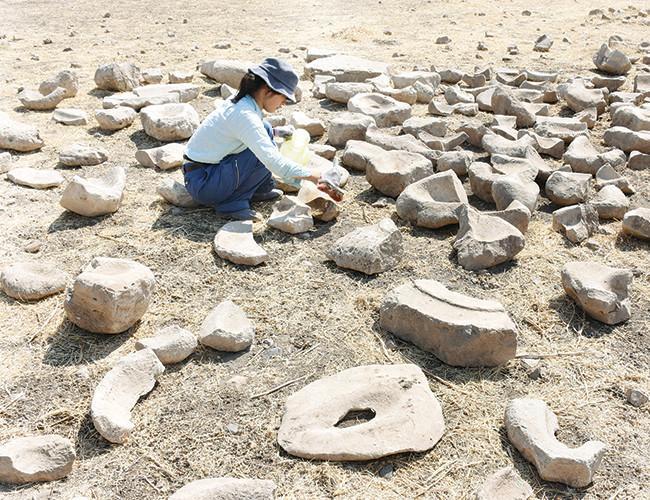
A settlement from 11,500 years ago has been unearthed in the Hasankeyf Mound on the Tigris River’s coastline in the fifth stage of archaeology works at the ancient town of Hasankeyf in the southeastern province of Batman, which has been initiated with the Ilısu Dam HES project protection and rescue works of the cultural heritage.
The head of the excavations in Hasankeyf, Assistant Professor Mevlüt Eliüşük, said 12 Japanese archaeologists are also working in the mound. “Excavations continued in the settlement in the first three months and then the conservation of findings was made. Analyses revealed that the settlement in Hasankeyf Mound dates back to 9,500 B.C., which is 11,500 years ago,” he added.
Eliüşük said they found some fields in the excavations and they believe there were steles like the ones in Göbeklitepe there. “But the steles have not survived until today,” he added.
He said life continued for 1,000 years in the mound. “The most important feature of the mound is that the settlement did not last there. Settlement began there 11,500 years ago but people abandoned the settlement after living there for 1,000 years,” he added.
Japan’s Tsukuba University academic Yutaka Miyake, the consultant of the excavations, said the mound dates back to the beginning of the Neoltihic Age and the source of living was hunting and collecting.
“They hunted wild sheep the most. As for plants, we found wild peanuts, almonds and terebinth berries. It is interesting that we did not find pieces of grain or wheat. This place was a settlement before its transition to a field of agriculture or breeding,” Miyake said.
According to him, two phases existed in the mound. “In the first phase, the architectural structure of houses was round. They dug a hole and put up a wall around it. In the second phase, they began building rectangular houses. This reveals the existence of two phases in the settlement.”
Dead buried in houses
Miyake said they unearthed 120 tombs beneath the houses and there were gifts next to the dead in the tombs. Among the gifts was a stone bowl, beads and sea shells, Miyake said.
“We detected two colors - black and red - in the bones of one third of these burials. These skeletons have line-like paint. After burying the dead, they waited for the body to decay. When the body decayed, they colored the bones with this paint. In some skeletons, the anatomic structures of the bones were preserved but bones have come loose. Then they replaced these bones back to their place,” he added.
Miyake said the settlement in the mound has similar features with Göbeklitepe in the southeastern province of Şanlıurfa.
He said a child’s skull was also buried next to the tomb of the adults. “We also found the skulls of an animal, which we believe belonged to a wild sheep or goat. We found six tombs like this,” he noted.
Works in the Hasankeyf Mound is set to continue through Dec. 15.